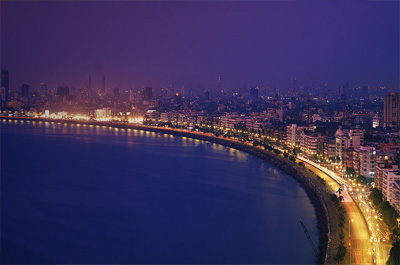General Information Mumbai

Mumbai is built from a group of seven islands, Bombay Island, Mazagaon, Parel, Colaba, Worli, Mahim and Old Woman's Island. The initial settlers were the Koli fishing community. In the third century BCE, Ashoka of Magadha ruled the islands and these islands were part of his Maurya Empire. The Muslim Governors of Gujarat, appointed by the Delhi Sultanate, controlled the islands from 1347 to 1407. In 1668, these islands were chartered to the British East India Company and in 1687; Bombay became the headquarters of the Bombay Presidency.
Shiv Sena's leadership pushed for the name change for many years prior to 1995. They argued that "Bombay" was a corrupted English version of "Mumbai" and an unwanted legacy of British colonial rule. Shiv Sena leader Bal Thackeray once installed a marble plaque with the name on the Gateway of India, a famous sandstone arch. The national government objected to the renaming, though, fearing that Bombay would lose its identity internationally.
The push to rename Bombay was part of a larger movement to strengthen Marathi identity in the Maharashtra region. The Shiv Sena party also declared their intentions to do away with the term "Bollywood," a conflation of "Bombay" and "Hollywood" that refers to Mumbai's film industry. That name, though, has stuck around.
The name change didn't impact all of Mumbai's residents. Speakers of Marathi and Gujarati, the local languages, have always called the city Mumbai. "Bombay" is an anglicisation of the Portuguese name "Bombaim," which is believed to derive from the phrase "Bom Bahia," or "Good Bay." (Portugal held territories in western India until 1961.) The financial capital of the nation, Mumbai, is situated on the west coast of Maharashtra and is the centre of the Indian entertainment industry.
BY AIR
The Chattrapati Shivaji International Airport operates round the clock and offers flight connectivity to all the major national and international destinations.
BY RAIL
The Mumbai Suburban Railway is a mass transit system serving the Mumbai Metropolitan Region. It is part of the public transport system of Mumbai and is provided for by the state-run Indian Railways' two zonal Western Railways and Central Railways.
BY ROAD
Mumbai Central Bus Stand is the main bus stand of Mumbai. The Maharashtra State Road Transport Corporation provides public bus service to the public in the state of Maharashtra.
LOCAL TRANSPORT
Public transport in Mumbai involves the transport of millions of its citizens by train, road and water. It is the most convenient, efficient and cheap form of transport to a population largely without sufficient income to afford cars. Mumbai has the largest organised bus transport network among major Indian cities. But the train network is constantly struggling to cope with the growing population. A train compartment is usually filled with over three times the passengers it was meant for at peak hours.
PUBLIC BUS SERVICE BEST
This system is run by a government organisation Brihanmumbai Electric Supply and Transport, the "B" formerly standing for "Bombay". It has a fleet of red single and double-decker buses.
There are air conditioned and low floor buses as well.
NMMT
Navi Mumbai Municipal Transport operates its Volvo buses from Navi Mumbai to Bandra,Borivali and Dindoshi.
TMT
Thane Municipal Transport operates its buses from Thane to Mulund and Borivali.
SUBURBAN ELECTRIC TRAINS
Local railway lines, Public, taxi/ autorickshaw, services Black and yellow metered taxis, Radio Taxis: Silver Green run by Meru and Yellow Red by Gold cabs and Black by Mega cabs.Blue and silver airconditioned metered taxis known as Cool Cabs. Black and yellow metered autorickshaws which are not allowed in the Central area (between Colaba and Mahim in the West and Colaba and Sion in the East) of the city.







